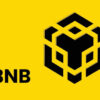
In the ever-evolving landscape of blockchain technology, Polkadot (DOT) has emerged as a groundbreaking platform designed to address many of the limitations found in traditional blockchain networks. Launched by Dr. Gavin Wood, one of the co-founders of Ethereum, Polkadot aims to create a scalable, interoperable, and secure blockchain ecosystem. This article provides a comprehensive introduction to Polkadot, exploring its core technology, unique features, and the potential impact it may have on the blockchain industry.
What is Polkadot (DOT)?
Polkadot is a multi-chain blockchain platform that enables different blockchains to interoperate and share information in a seamless manner. Unlike traditional blockchain networks that operate in isolation, Polkadot connects multiple blockchains, known as parachains, allowing them to work together as part of a unified ecosystem. This interoperability facilitates the transfer of assets and data across different blockchains, creating a more cohesive and integrated blockchain environment.
The native cryptocurrency of the Polkadot network is DOT, which serves multiple purposes, including governance, staking, and bonding. DOT holders play a crucial role in the network’s decision-making process and help secure the blockchain by participating in the staking mechanism.
Key Features of Polkadot
Polkadot’s design and technology introduce several key features that distinguish it from other blockchain platforms:
1. Interoperability
One of Polkadot’s most significant features is its focus on interoperability. By allowing different blockchains to communicate and exchange information, Polkadot addresses the fragmentation of the blockchain ecosystem. This interoperability enables seamless cross-chain transactions and data sharing, enhancing the overall functionality and utility of blockchain technology.
2. Scalability
Polkadot addresses scalability challenges through its unique architecture. The platform utilizes a sharded design, where multiple parachains operate in parallel, processing transactions independently. This parallel processing increases the overall throughput of the network, allowing it to handle a higher volume of transactions compared to single-chain blockchains.
3. Governance
Polkadot employs an on-chain governance model that allows DOT holders to participate in the decision-making process. This governance structure enables stakeholders to propose and vote on protocol upgrades, changes, and other critical decisions. By involving the community in governance, Polkadot ensures that the network evolves in a decentralized and democratic manner.
4. Security
Polkadot provides robust security through its shared security model. The platform uses a Nominated Proof of Stake (NPoS) consensus mechanism to secure the entire network. Validators and nominators work together to maintain the integrity of the network, ensuring that all parachains benefit from a high level of security.
5. Customizability
Polkadot offers a high degree of customizability through its parachain framework. Developers can create custom blockchains (parachains) tailored to specific use cases and integrate them into the Polkadot network. This flexibility allows for the creation of specialized solutions that can leverage the benefits of the Polkadot ecosystem while maintaining their unique features.
Core Components of Polkadot
Polkadot’s architecture consists of several core components that work together to provide a scalable and interoperable blockchain network:
1. Relay Chain
The Relay Chain is the central component of the Polkadot network. It is responsible for coordinating the entire ecosystem, ensuring the consensus and security of the network. The Relay Chain connects and secures all parachains, facilitating communication and interoperability between them.
2. Parachains
Parachains are independent blockchains that run parallel to the Relay Chain. Each parachain can have its own unique features and functionality, but they all benefit from the shared security and interoperability provided by the Relay Chain. Parachains can be designed for specific use cases, such as decentralized finance (DeFi), non-fungible tokens (NFTs), or supply chain management.
3. Bridges
Bridges are components that enable Polkadot to connect with external blockchains and networks. Bridges facilitate cross-chain communication and asset transfers between Polkadot and other blockchain ecosystems, such as Ethereum and Bitcoin. This connectivity extends Polkadot’s interoperability beyond its native network.
4. Validators and Nominators
Validators are responsible for securing the Polkadot network by validating and finalizing transactions on the Relay Chain. Nominators support validators by staking their DOT tokens, which helps to secure the network and incentivize good behavior. Validators and nominators work together to maintain the integrity and security of the Polkadot ecosystem.
5. Governance Mechanisms
Polkadot’s governance mechanisms include a range of tools for stakeholders to participate in network decision-making. DOT holders can propose and vote on changes to the protocol, including upgrades, modifications, and new features. This decentralized governance model ensures that the network evolves in line with the community’s needs and preferences.
Use Cases and Applications
Polkadot’s technology supports a wide range of use cases and applications, including:
- Decentralized Finance (DeFi): Polkadot’s interoperability and scalability make it an ideal platform for DeFi projects, enabling seamless cross-chain transactions and integrations.
- Non-Fungible Tokens (NFTs): Parachains on Polkadot can support NFT platforms, allowing for the creation, trading, and management of digital assets.
- Supply Chain Management: Polkadot’s customizability and scalability enable the development of solutions for tracking and managing supply chains in a decentralized manner.
- Enterprise Solutions: Polkadot’s flexibility and security make it suitable for enterprise-grade applications, including secure data sharing and collaborative platforms.
Conclusion
Polkadot (DOT) represents a significant advancement in blockchain technology, offering a scalable, interoperable, and customizable platform for a wide range of applications. With its focus on addressing the limitations of traditional blockchains through interoperability, scalability, and robust security, Polkadot is well-positioned to drive innovation in the blockchain space.
As the blockchain ecosystem continues to grow and evolve, Polkadot’s unique approach and technology are likely to play a pivotal role in shaping the future of decentralized networks. Whether you’re a developer, investor, or blockchain enthusiast, understanding Polkadot’s technology and its potential impact is essential for navigating the evolving landscape of blockchain technology.









